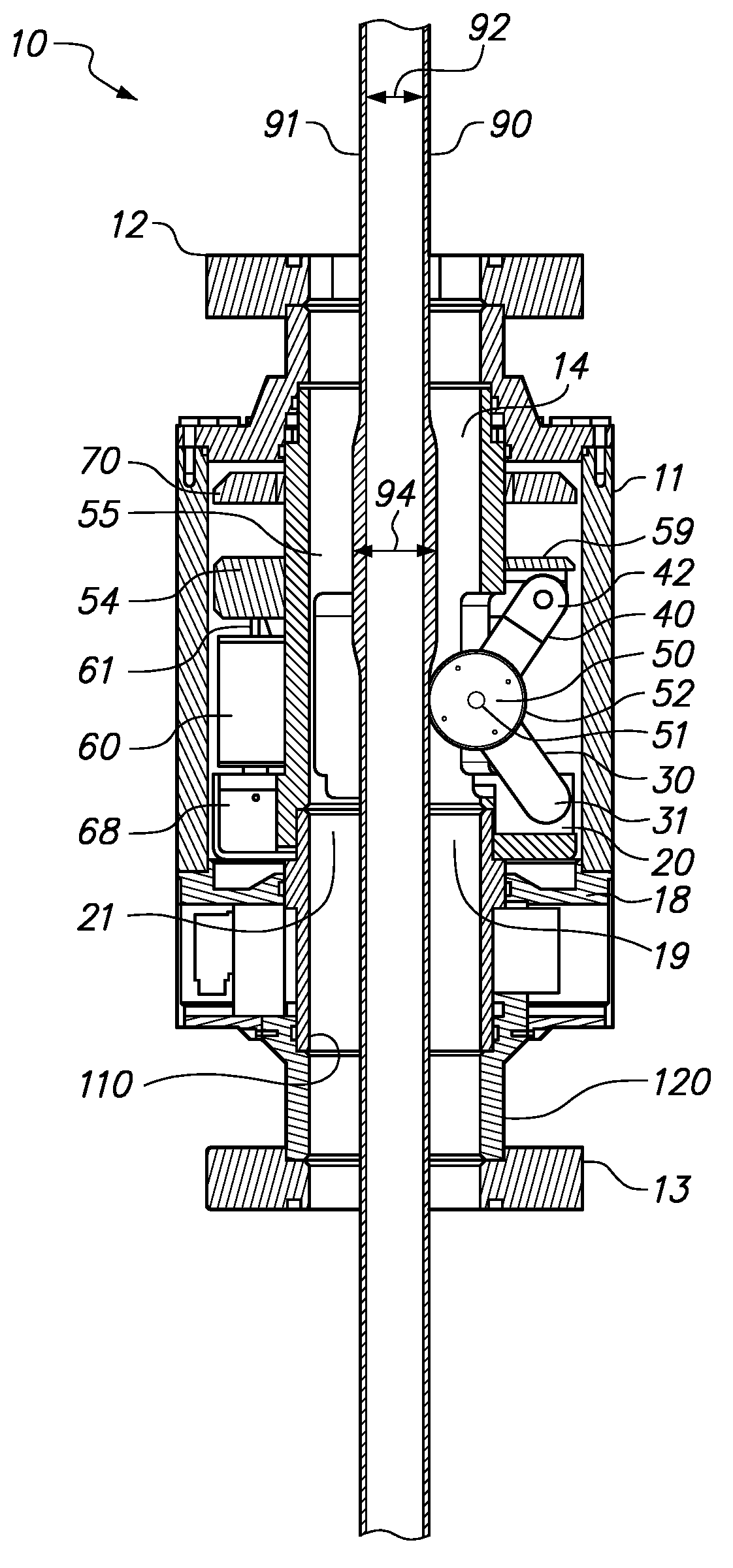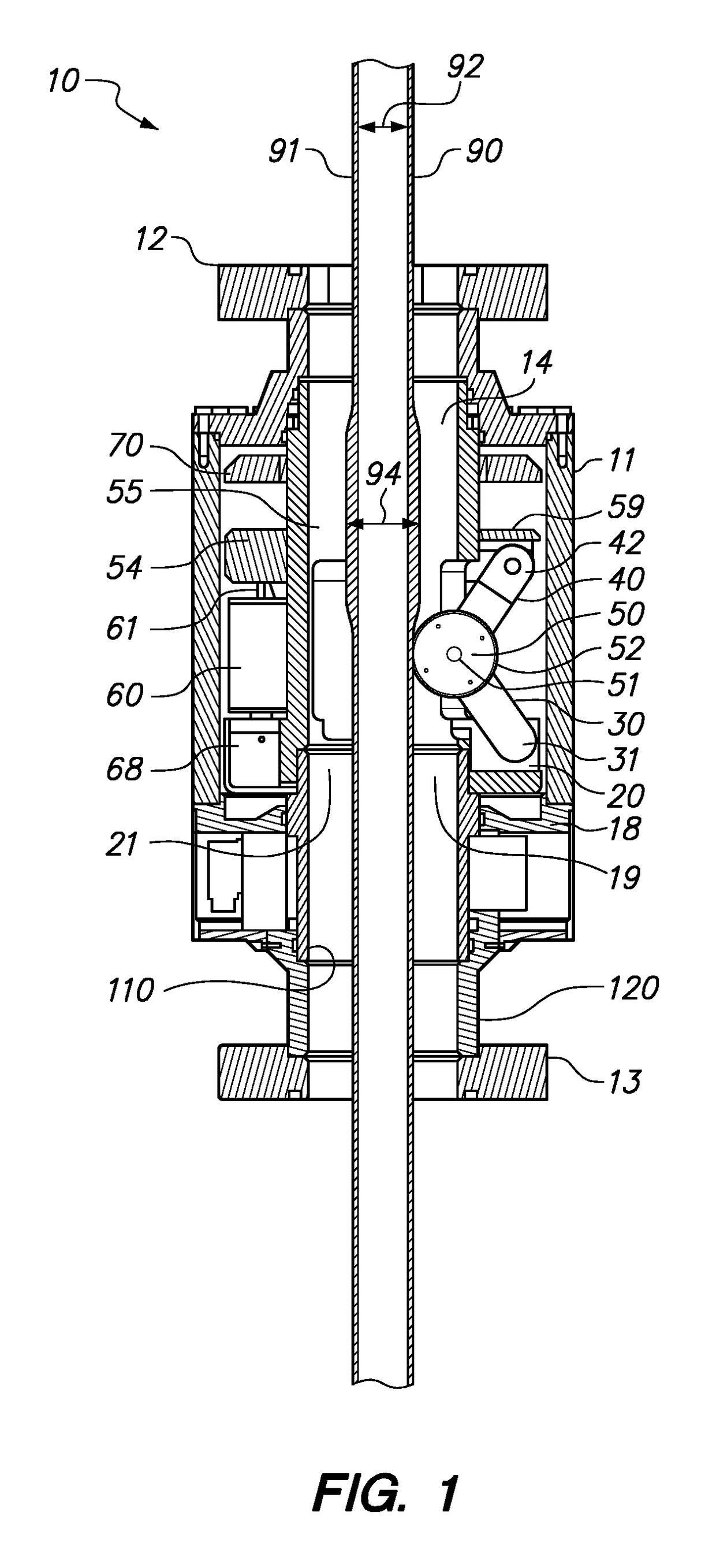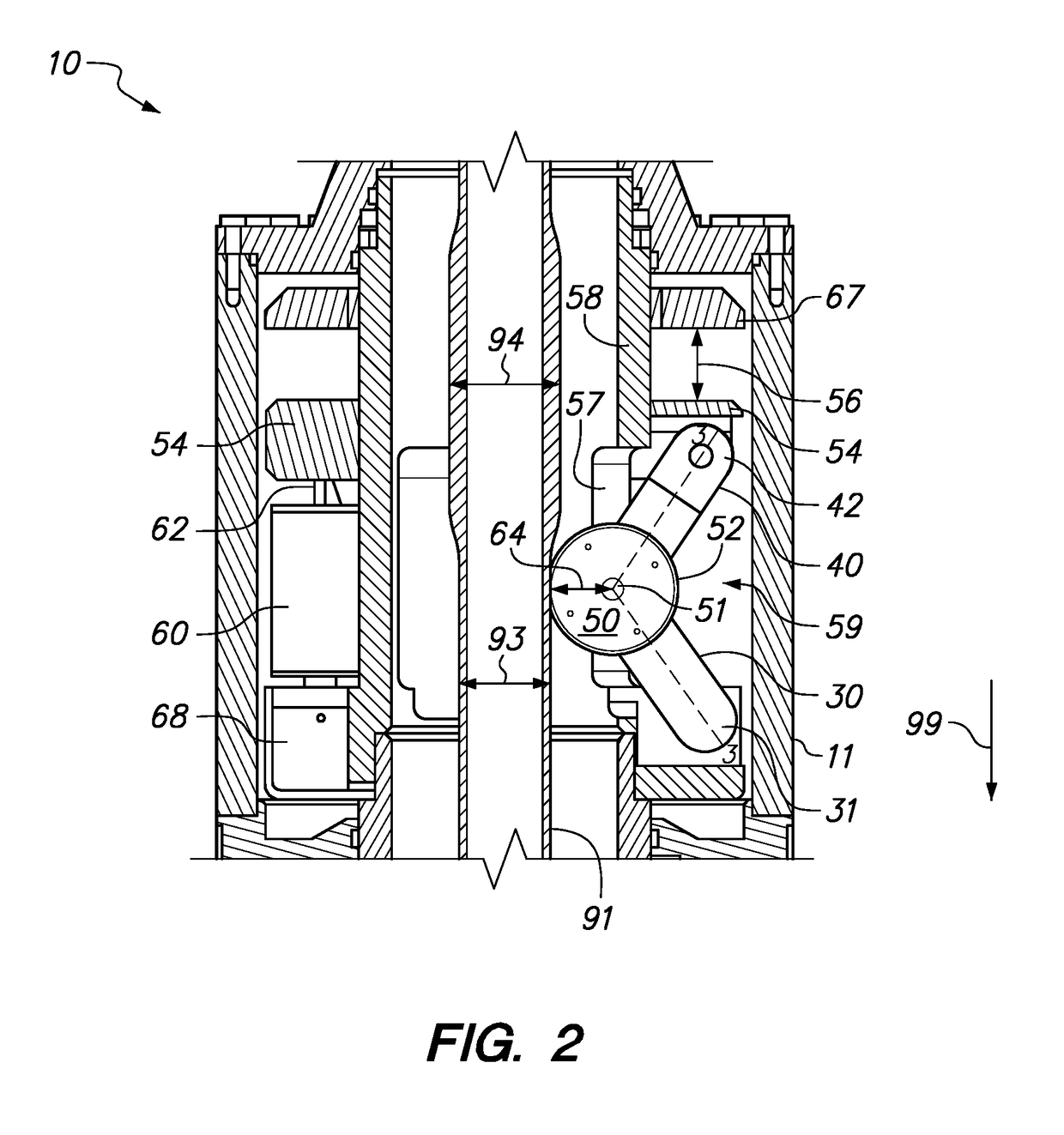Apparatus for measuring a tubular string as it is lowered into a borehole and method
a technology of tubular string and apparatus, which is applied in the direction of instruments, surveying, borehole/well accessories, etc., can solve the problems of many human errors in the manual process, and achieve the effects of preventing slippage, promoting positive engagement, and preventing slippag
- Summary
- Abstract
- Description
- Claims
- Application Information
AI Technical Summary
Benefits of technology
Problems solved by technology
Method used
Image
Examples
Embodiment Construction
[0030]FIG. 1 is a sectional elevation view of an embodiment of an apparatus 10 of the present invention with a tubular string 90 having an interior diameter 92 extending therethrough. The apparatus 10 comprises a housing 11 having an upper flange 12 and a lower flange 13, and in interior chamber 14 therebetween. The housing 11 includes an annular support 18 having a central passage 19. A lower ring 20 is rotatably supported on the annular support 18 and includes a central passage 21 that is aligned with the central passage 19 of the annular support 18. An upper ring 54 also includes a central passage 55 that is aligned with the central passages 19 and 21 of the annular support 18 and the lower ring 20, respectively. The apparatus 10 further comprises a plurality of angularly distributed rolling elements 50.
[0031]The lower ring 20 is pivotally coupled to a plurality of angularly distributed lower legs 30 at a first end 31 of each of the plurality of lower legs 30, and the upper ring ...
PUM
 Login to View More
Login to View More Abstract
Description
Claims
Application Information
 Login to View More
Login to View More - R&D
- Intellectual Property
- Life Sciences
- Materials
- Tech Scout
- Unparalleled Data Quality
- Higher Quality Content
- 60% Fewer Hallucinations
Browse by: Latest US Patents, China's latest patents, Technical Efficacy Thesaurus, Application Domain, Technology Topic, Popular Technical Reports.
© 2025 PatSnap. All rights reserved.Legal|Privacy policy|Modern Slavery Act Transparency Statement|Sitemap|About US| Contact US: help@patsnap.com



